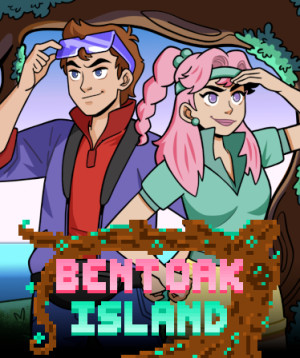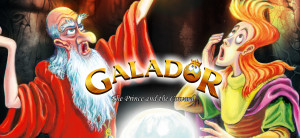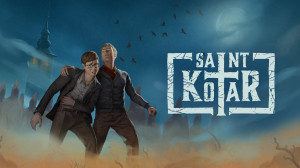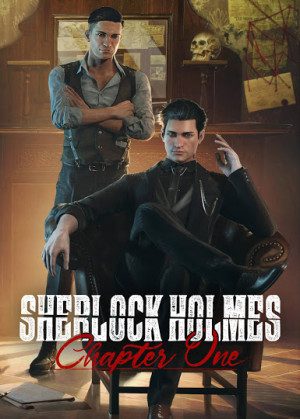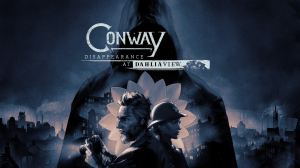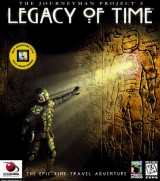Review for SAMUDRA
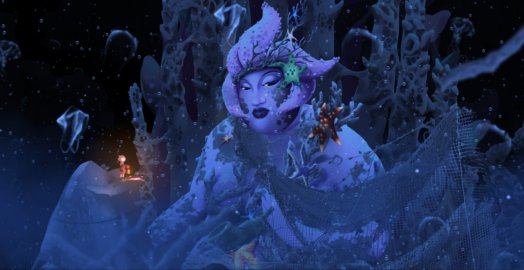
Astonishingly, around 80% of our oceans remain unexplored. Though we know they’re home to hundreds of thousands of species, and mountains and canyons of incredible scale, they still conceal a wealth of secrets. Doesn’t that just set your imagination alight? There’s something magical and mysterious about the dark and watery unknown. Unfortunately, one undeniable fact is that, through centuries of pollution, we’ve threatened the future of our aquatic inhabitants and ourselves. Malicious chemical dumping, careless oil spills, mindless plastic waste; we’ve firmly left our grubby mark and caused irreparable damage to our planet both on land and at sea.
SAMUDRA is an underwater side-scrolling puzzle-platformer that aims to bring those two ideas together: the mythical fantasy of the oceans and the grim polluted reality. If you’re looking for subtlety, you won’t find it here. That’s not to say the game is preachy, just that it wears its message clearly on its sleeve, which makes sense given that profits from the game are funnelled to projects helping to reduce plastic waste in Indonesia (home of developer Khayalan Arts).
Personally, I’m all for media that gets people thinking about their impact on the Earth. Regrettably, while the game looks great, with a successful blend of enchanting and unsettling creatures, it’s ultimately not that fun to play. It feels sluggish in movement and pacing, dragged down by mundane puzzles and basic stealth. And while there’s a potentially interesting tale bubbling beneath the surface, you’re mostly left alone to extrapolate any meaning.
The game opens on a shot of a young boy in a diving helmet drifting down into the gloomy depths of the ocean. Surrounding him are an inordinate number of bottles, medical masks, straws, and other human-generated debris. You take control as he lands on the seabed, presumably with the aim of getting back to the surface. You do this by navigating through 2D levels, jumping over gaps, moving rubble, climbing nets, and performing other basic platforming tasks. While you move with WASD on the keyboard or analogue stick on a gamepad, the spacebar/controller button handles all other interaction, so you don’t need much dexterity. You will, however, occasionally have to time an action to an on-screen prompt to avoid failure. Sometimes the window for this is unclear, causing you to fail without even realising why. Fortunately, despite how unfair this feels at the time, the respawn points are plenty generous so it’s only ever a momentary frustration.
As you explore the waters (much like you would any aboveground game) you discover a crashed plane and crawl through the remains, where SAMUDRA begins to nicely introduce some sci-fi and supernatural elements. You meet a clothes-wearing octopus, relaxing and playing its guitar, accompanied by a starfish companion who sticks its tongue out at you. Both crop up multiple times throughout the journey to vaguely give direction, but mostly to add flavour. You then encounter a huge anthropomorphic creature, tentacles wiggling on its head and a pipe in its hand, trapped in a net. You burn the net with your lantern (yes, fire underwater; don’t overthink it), which amounts to mashing the spacebar. A handful of these mythical creatures are scattered throughout the game, each impressive in scale, all in need of your help to escape some man-made obstacle.
Progressing further along the sea floor, you’ll find yourself in a factory full of conveyer belts, pipes, and machinery, controlled by faceless humans in suits and patrolled by spherical drones. Stealth mechanics come into play here – it’s game-over if the drone’s light or the suited figures spot you. This means you need to move between cover at the right moment to avoid their gaze. It adds a spoonful of tension, but it’s basic fare as the enemy’s movements are looped and these sequences end up feeling pedestrian.
To SAMUDRA’s credit, each of its five chapters tries to add something different. One sees you piloting a small submersible with similar controls but the added ability to move vertically as well as horizontally, clearing boulders to open paths; while another has you dodging falling rubble to escape a deadly large fish’s chomp. There are also puzzles sprinkled throughout, like inspecting statues to reveal hidden symbols or recreating a musical pattern. Trouble is, none of it is that fun. The puzzles and action are serviceable enough to keep you mildly engaged, but there’s nothing here to make you feel completely satisfied or entertained. It’s a problem that often plagues indie games like this – the themes and the atmosphere are strong, but the gameplay is lacking.
There are optional puzzle rooms that you could easily overlook if you’re just blindly powering through because their entrances are slightly off the primary track. The aim of these rooms is to free a trapped pufferfish, which you do by solving mechanical puzzles like rotating pipes or activating buttons in sequence. If you’re seeking a greater challenge, you should take the time to discover at least some of these; the difficulty steadily increases between each room. That said, sometimes they’re needlessly taxing because the objectives or mechanics of the puzzle are unclear. A couple of them I frustratingly gave up on because I couldn’t work out what I was meant to be doing – a problem compounded by the large spaces and sluggish character movement, which made experimentation a slog.
There’s no dialogue throughout. Instead, expression is portrayed through pictograms in speech bubbles. These range from simple symbols, like a puzzle piece or an exclamation mark, to more involved animations when two characters converse. These are sometimes tricky to comprehend and often I was unsure what was meant to be conveyed. This is an overarching problem with SAMUDRA, which sparks intriguing questions. Why is there a factory on the ocean floor? Who runs it, and what is its purpose? Why are you being hunted? Who is the musical octopus? But the game isn’t interested in providing any sort of answers, instead riding on the strength of its atmosphere rather than telling a meaningful story. It makes for a hollow, emotionless experience. Even the ending, where you’re asked to make a choice, was lost on me. I didn’t understand what I was deciding or why, and the outcome was equally confusing. Your mileage may vary if you’re willing to let your mind fill in the sizeable blanks.
Unquestionably, the most appealing aspect of the game is its art, successfully blending the whimsical and the horrific in an enjoyably unsettling way. In one part, you’re helping a wide-eyed yellow blobby creature that wouldn’t be out of place in a kid’s cartoon; the next moment, you’re on the run from a matryoshka creature of terror that looks like it came straight from a Guillermo del Toro movie. These juxtapositions in design may sound weird, and indeed on paper seem like they shouldn’t work, but there’s something about the shadowy ocean depths about which we know so little that allows for effective blending of such diverse, fantastical elements.
SAMUDRA’s hand-drawn 2D stylings are wonderful and do a great job of realising not only the huge amount of junk and variety of sea life, but also evocatively portraying ancient sunken cities and crumbling machinery. The colour palette is suitably comprised of blues, greens, and black, while the glows of bioluminescent creatures and machinery alike lend an eerie air. While some of the industrial elements do grow repetitive, the artwork itself is mostly hard to fault. There’s a particularly clever touch early on when you think you’ve spotted a jellyfish floating past – alas, the camera pulls back and it’s actually a swarm of plastic bags.
The sound design is also worthy of praise. At times, it’s evocatively silent, the boy’s footsteps the only thing heard over the muffled churning of water. Elsewhere, slow piano lends mystery to the ocean’s inhabitants, which contrasts against the harsh electronic tunes in the factory. I particularly liked the echoing sonar sound that the drones emit. It’s not perfect, though. The music can be basic, repeating two notes ad nauseum, or looping a track to death, and sometimes it doesn’t suit the scene. A particularly egregious example of both issues comes in a late-game chase sequence and almost completely sucks the dynamism from it.
It took me around three and a half hours to complete SAMUDRA, which feels right given its budget price point. You could extend this further if you wanted to hunt for all the collectibles (which are, appropriately, literal rubbish), but I was ready to be done. There’s clearly been a lot of love poured into this game, seen mostly in its delightful hand-drawn art that brings a variety of aquatic locales and fun and freaky creatures to life. The atmosphere powerfully nails the right amount of dread that an experience about pollution and underwater exploration should, and the overall message is admirable. But regrettably it’s all a bit boring, bogged down with by-the-numbers platforming and puzzling, and a story that’ll leave you unsatisfied. You might want to put on your diving gear and give this a try if the setting appeals to you, but don’t be surprised if you find it a bit shallow.
WHERE CAN I DOWNLOAD SAMUDRA
SAMUDRA is available at:
We get a small commission from any game you buy through these links (except Steam).Our Verdict:
The side-scrolling SAMUDRA has an admirably strong environmental message and some lovely deep-sea art, but that’s not enough to overcome the unimaginative gameplay and vague storytelling.



